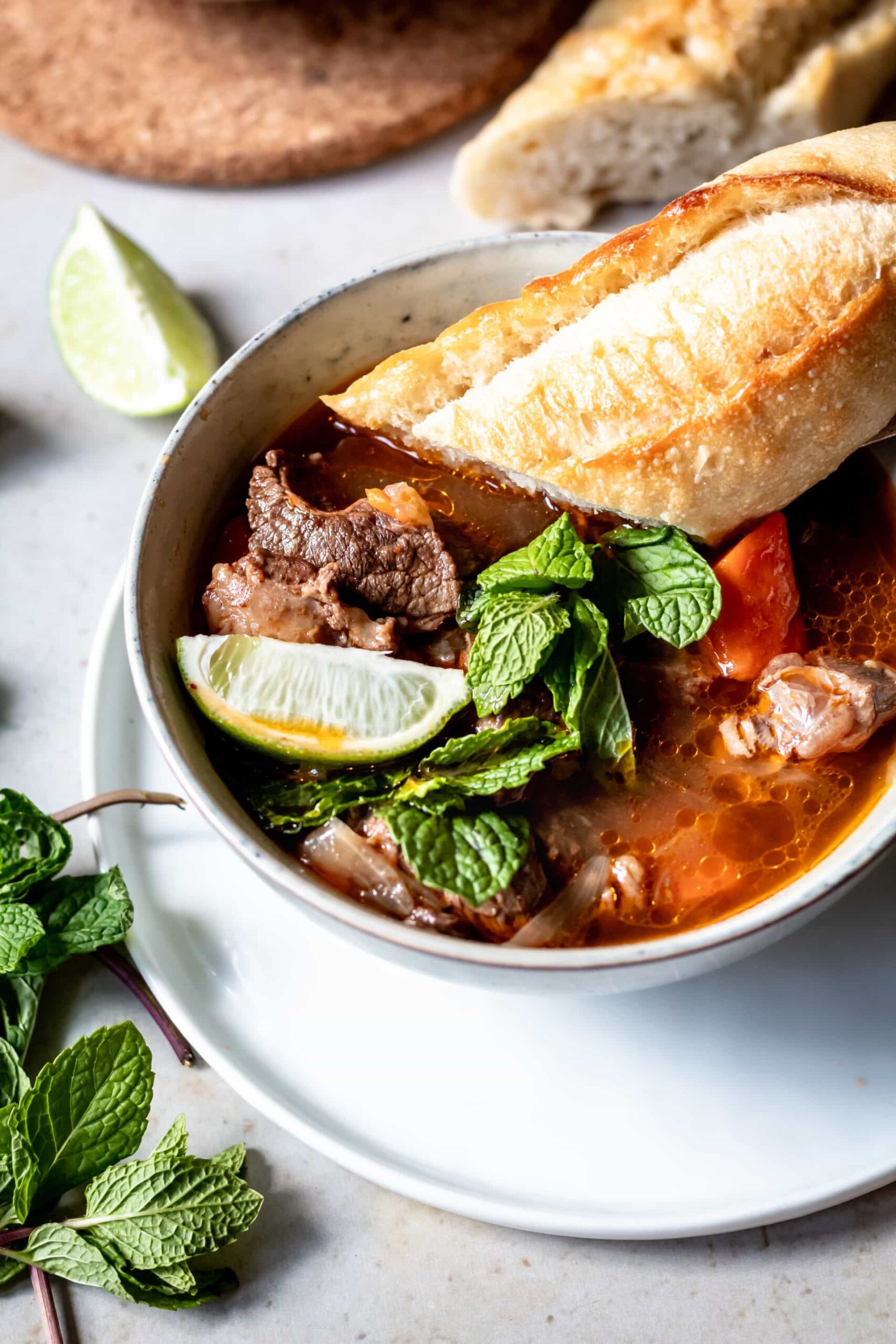Vietnamese cuisine offers a delightful mix of flavors, textures, and aromas. From hearty soups to fresh salads, there’s something for everyone to enjoy.
These recipes bring the tastes of Vietnam right to your kitchen.
You’ll discover 25 Vietnamese dishes that are easy to make at home. These recipes include popular favorites like pho and spring rolls, as well as lesser-known regional specialties.
With simple ingredients and clear instructions, you can create authentic Vietnamese meals for your family and friends.
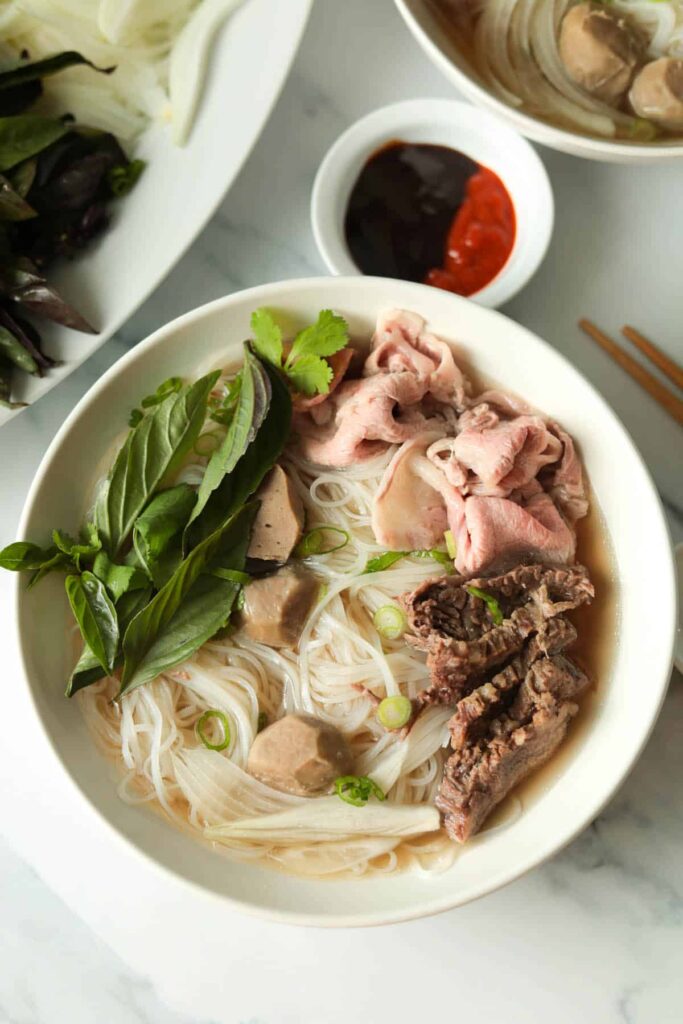
1. Pho Bo
Pho Bo is Vietnam’s beloved beef noodle soup. This comforting dish features a rich, flavorful broth simmered with beef bones and aromatic spices.
You’ll find tender slices of beef, chewy rice noodles, and fresh herbs in each bowl. Common toppings include bean sprouts, basil, and lime wedges.
To enjoy Pho Bo like a local, add hoisin sauce and sriracha to taste. Slurp the noodles and sip the broth to fully savor its complex flavors.
This hearty soup is perfect for cold days or as a satisfying meal any time. You can find Pho Bo at Vietnamese restaurants or try making it at home for an authentic experience.
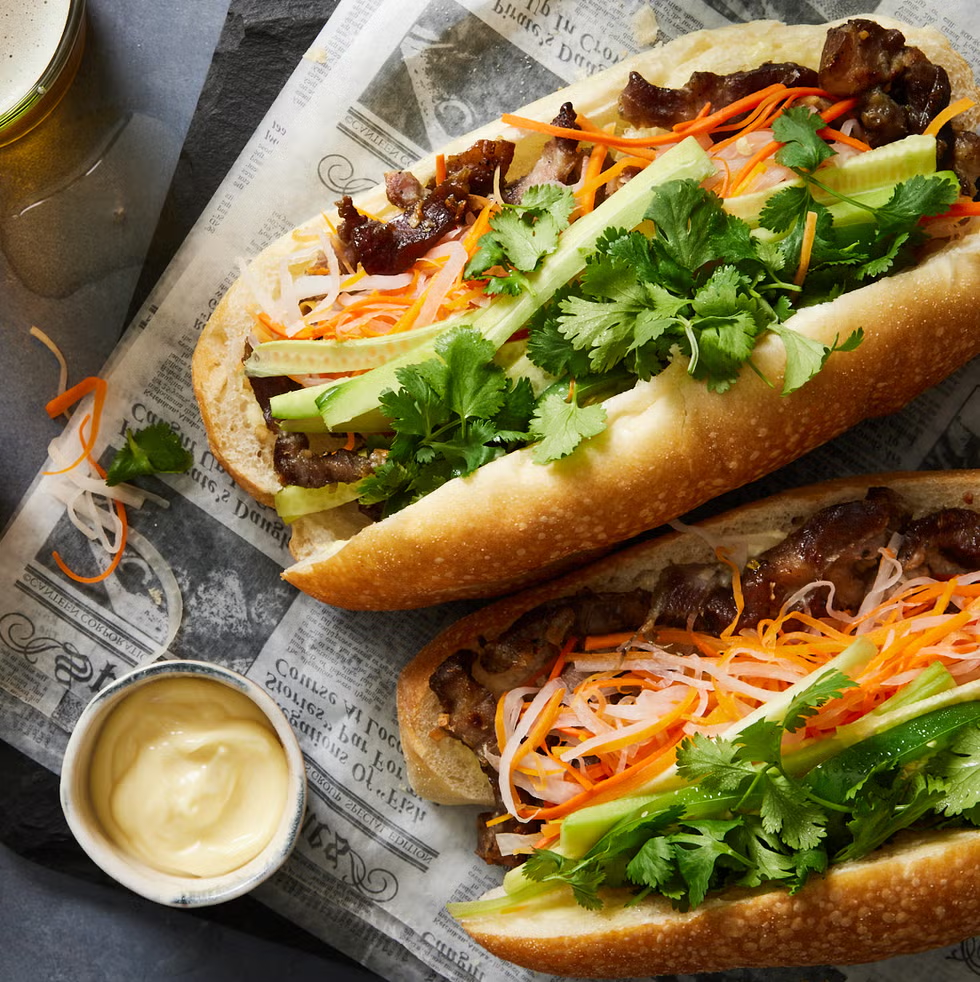
2. Banh Mi
Banh mi is a tasty Vietnamese sandwich that combines French and Vietnamese flavors. You’ll love the mix of crispy baguette and savory fillings.
To make banh mi, start with a fresh baguette. Slice it open and spread mayo or pate inside.
Add your choice of meat like grilled pork, chicken, or tofu. Top the meat with pickled veggies like carrots and daikon.
Sprinkle on some cilantro and cucumber slices for freshness. A dash of soy sauce or Maggi seasoning adds extra flavor.
You can customize your banh mi with different meats and toppings. It’s a quick, delicious meal that’s perfect for lunch or dinner.

3. Goi Cuon
Goi Cuon are fresh Vietnamese spring rolls. You can make these tasty treats at home with a few simple ingredients.
Start by preparing rice noodles, cooked shrimp, and pork. Slice some veggies like lettuce and cucumber.
Dip rice paper in warm water to soften it. Place the fillings on the rice paper and roll it up tightly.
Serve your Goi Cuon with a peanut dipping sauce. Mix peanut butter, hoisin sauce, and water to make an easy sauce.
These rolls are healthy and perfect for a light meal or snack. You can prepare them ahead of time for parties or lunches.
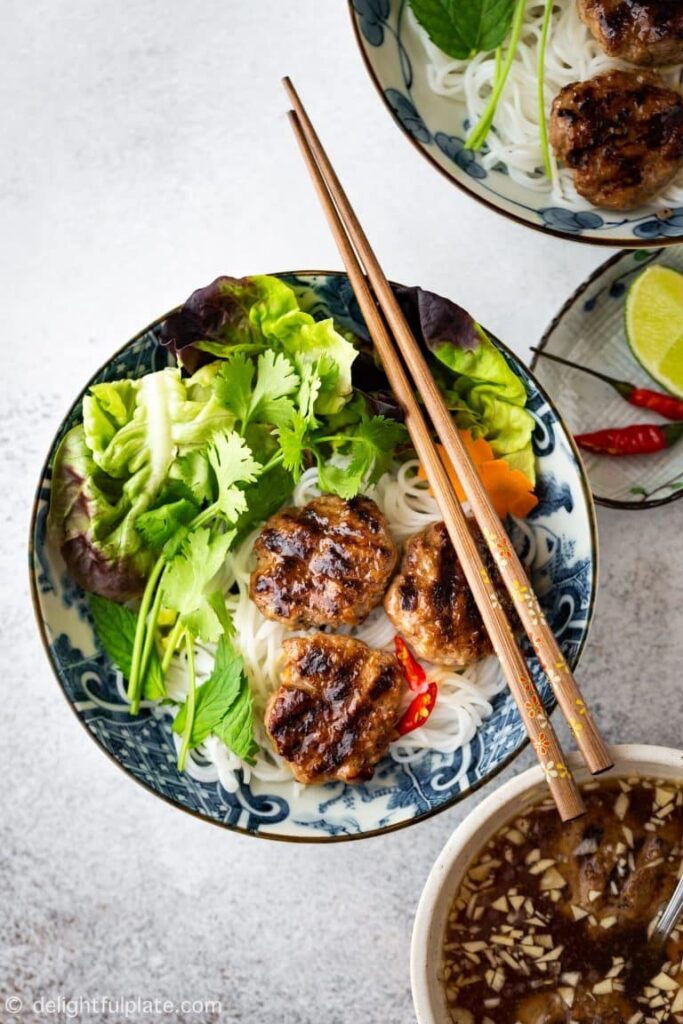
4. Bun Cha
Bun cha is a popular Vietnamese dish from Hanoi. It features grilled pork served with rice noodles and a flavorful dipping sauce.
The dish consists of two types of pork: patties made from ground pork and slices of pork belly. These are marinated with ingredients like fish sauce, garlic, and lemongrass.
The pork is grilled until caramelized and served alongside rice noodles, fresh herbs, and pickled vegetables. A warm, citrusy broth accompanies the meal.
To eat bun cha, you dip the noodles and pork into the broth. This creates a delicious mix of flavors and textures in each bite.
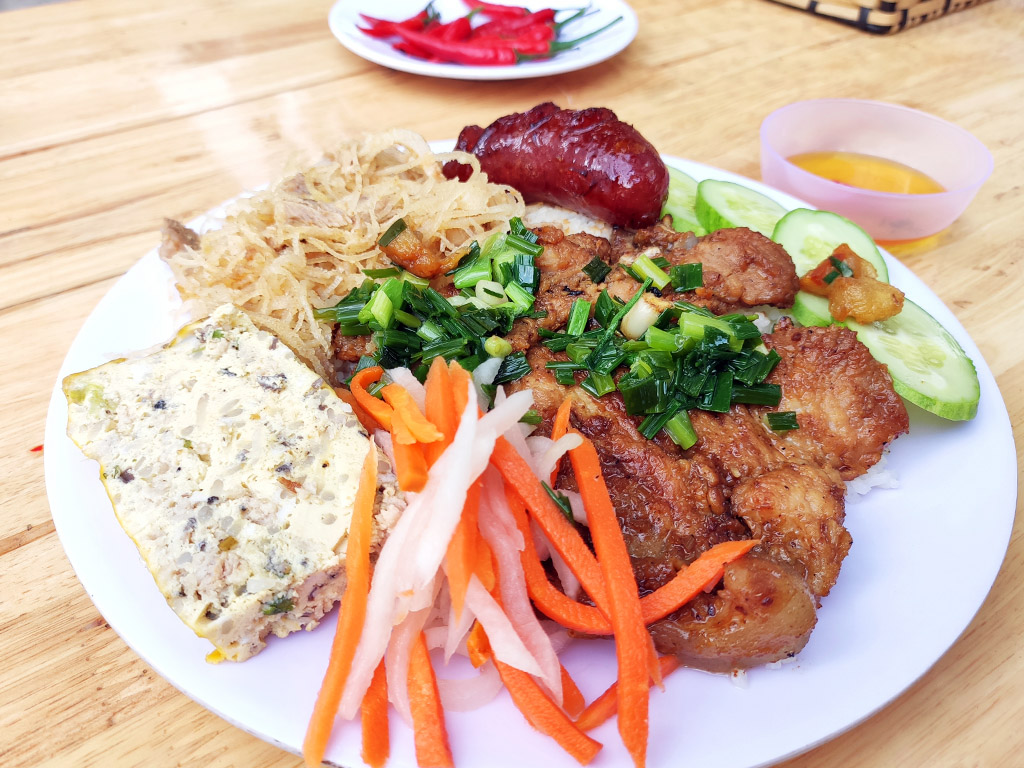
5. Com Tam
Com Tam is a popular Vietnamese dish made with broken rice. You’ll love the soft, fluffy texture of these smaller rice grains.
This dish often comes with grilled pork chops, but you can add other toppings too. Try it with fried eggs, shredded pork skin, or grilled chicken.
Don’t forget the fish sauce! It adds a tangy, savory flavor that brings the whole meal together.
Com Tam makes a great breakfast, but you can enjoy it any time of day. It’s filling, tasty, and easy to make at home.
Try this comforting meal next time you want to explore Vietnamese cuisine. You’ll see why it’s a favorite in Vietnam and beyond.
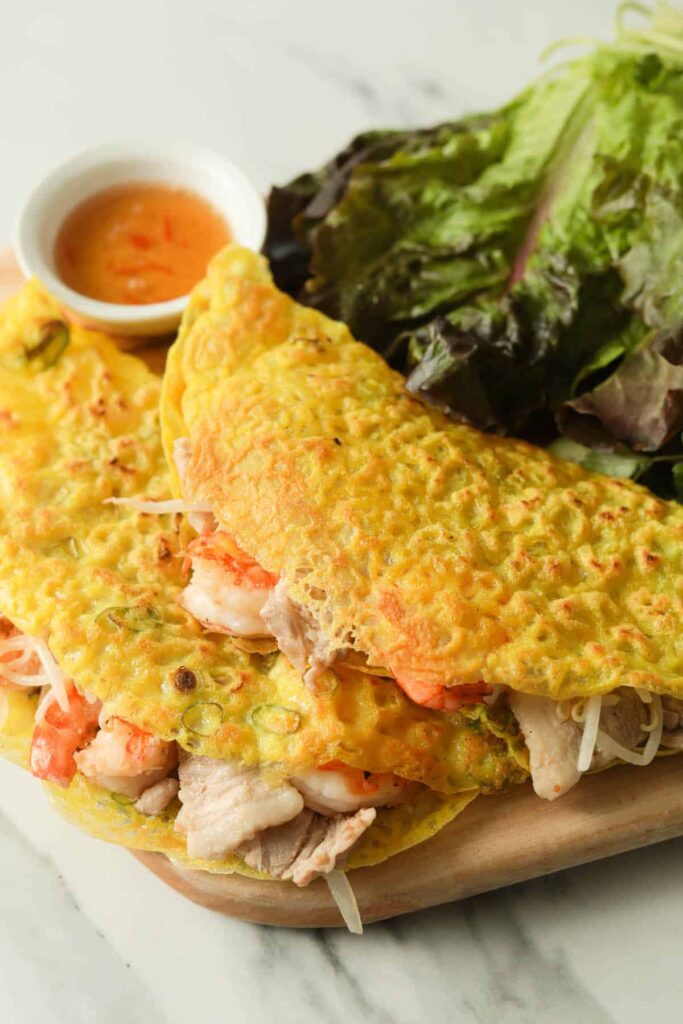
6. Banh Xeo
Banh Xeo are crispy Vietnamese crepes that will delight your taste buds. These golden pancakes are made with rice flour, turmeric, and coconut milk, giving them a unique flavor and color.
To make Banh Xeo, you’ll pour the batter into a hot pan and add fillings like pork, shrimp, and bean sprouts. Cook until the edges turn crispy and golden brown.
Serve these savory crepes with fresh herbs and lettuce leaves. You can wrap pieces of the crispy pancake in lettuce and dip them in nuoc cham sauce for a perfect bite.
Banh Xeo are fun to make and even more enjoyable to eat. Try this recipe for a tasty Vietnamese meal at home.
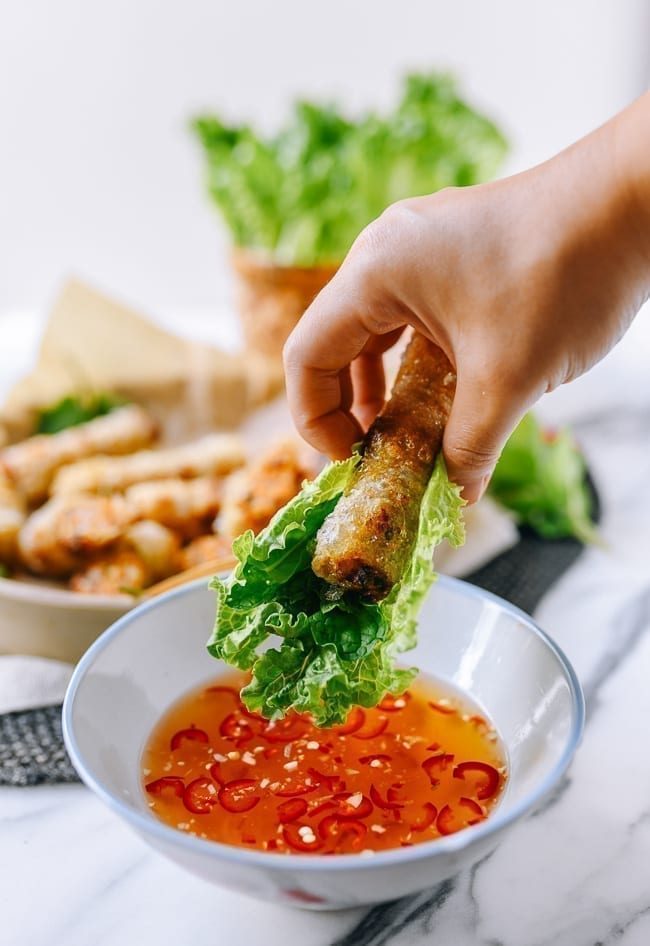
7. Cha Gio
Cha Gio are Vietnamese fried spring rolls that make a tasty appetizer or snack. These crispy rolls have a savory filling wrapped in rice paper.
To make Cha Gio, mix ground pork with chopped wood ear mushrooms, mung bean noodles, and green onions. Add seasonings like garlic, salt, pepper, and fish sauce for flavor.
Wrap small amounts of filling in rice paper and seal the edges. Fry the rolls in hot oil until golden brown and crunchy.
Serve Cha Gio hot with lettuce leaves and herbs for wrapping. Dip them in nuoc cham sauce for extra zest. You’ll love the contrasting textures and flavors of these classic Vietnamese rolls.
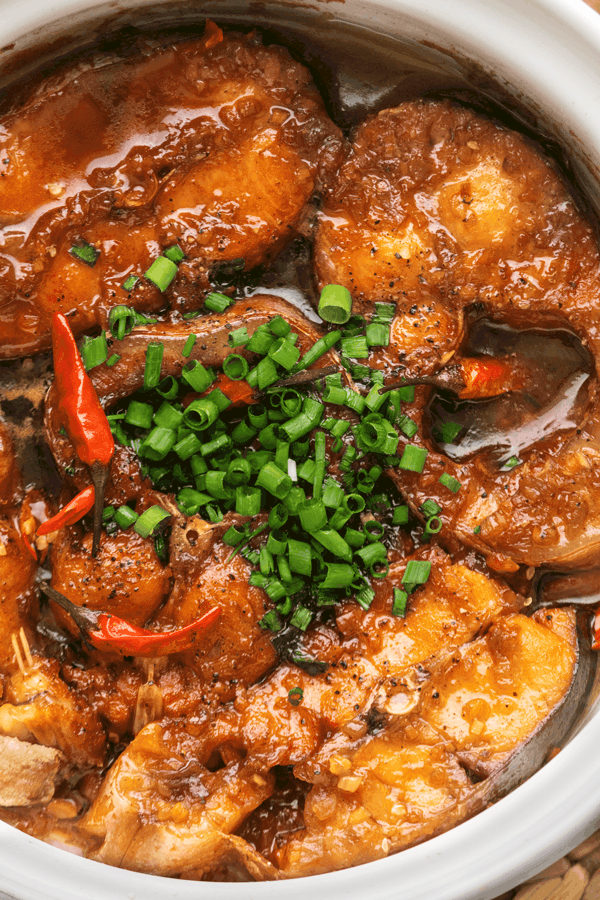
8. Ca Kho To
Ca Kho To is a popular Vietnamese dish of caramelized and braised fish. It’s typically made with catfish, but other firm white fish can work too.
To make Ca Kho To, you’ll marinate fish pieces in fish sauce and sugar. Then you’ll create a caramel sauce in a clay pot or skillet.
Next, you’ll layer onions and the marinated fish in the pot. Add seasoning and cooking liquid, then simmer for about 20 minutes.
The result is tender fish in a rich, savory-sweet sauce. Ca Kho To is often served with steamed rice and vegetables for a tasty meal.
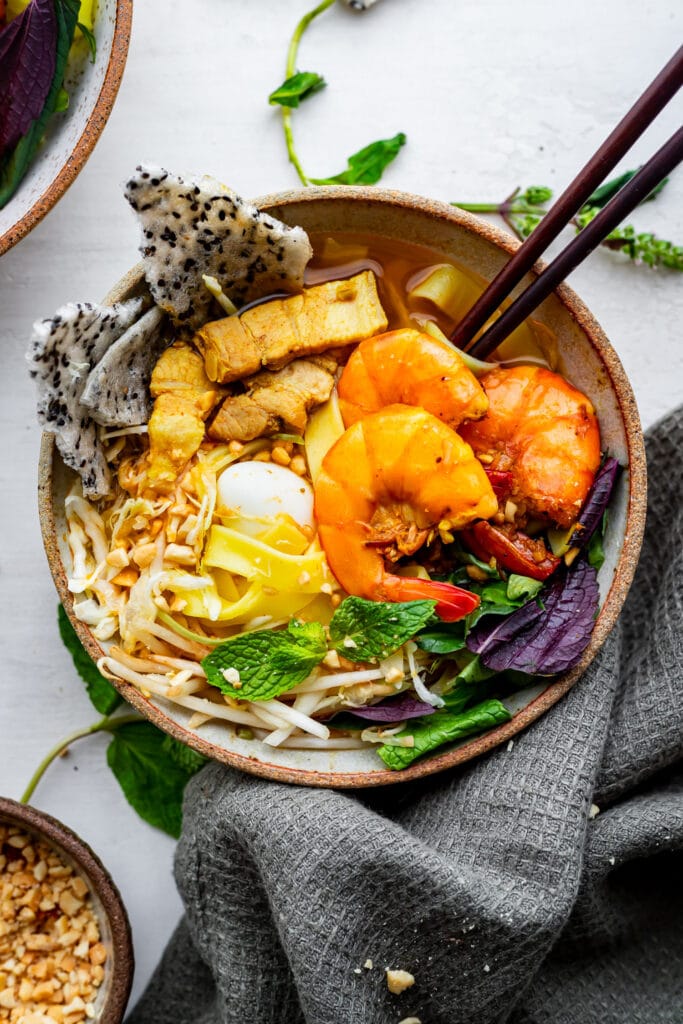
9. Mi Quang
Mi Quang is a tasty noodle dish from central Vietnam. It has yellow rice noodles and a small amount of savory broth.
The broth is made with pork or chicken bones and flavored with turmeric for a golden color. Toppings vary but often include shrimp, chicken, and pork. You’ll also find fresh herbs, peanuts, and crispy rice crackers on top.
Mi Quang is served with lots of fresh veggies on the side. These add crunch and balance the rich flavors.
You can find Mi Quang at Vietnamese restaurants or try making it at home. It’s a filling meal that shows off central Vietnam’s tasty cuisine.
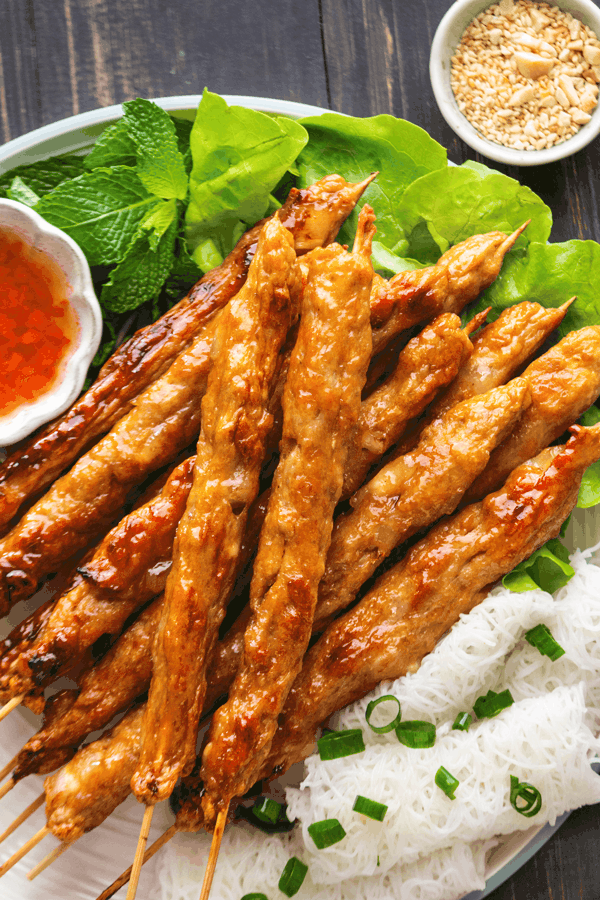
10. Nem Nuong
Nem nuong is a tasty Vietnamese grilled pork sausage. You make it by mixing ground pork with spices and other ingredients.
The key is to create a smooth, light pink paste. This often includes fish sauce, garlic, shallots, and sugar. Some recipes add rice powder or cornstarch to help bind it.
You can shape the meat into small patties or mold it onto skewers. Then grill until it’s cooked through and slightly charred.
Nem nuong is great served with rice noodles, herbs, and dipping sauce. It’s a popular street food and a fun dish to make at home for a Vietnamese-style BBQ.
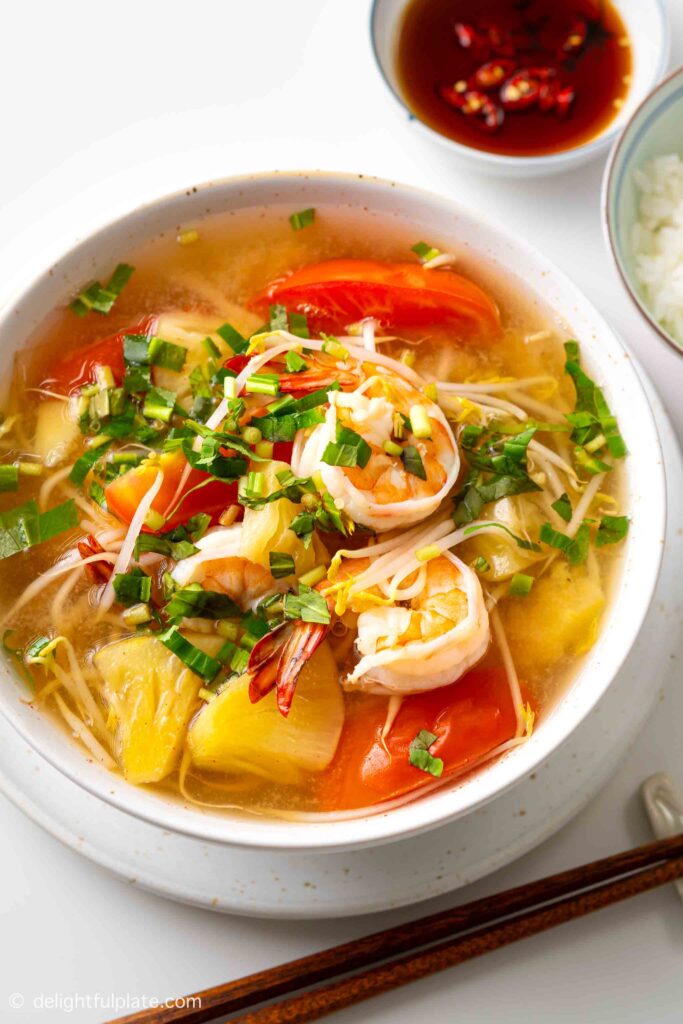
11. Canh Chua
Canh Chua is a tasty Vietnamese sweet and sour soup. You’ll love its bright flavors and mix of textures. This soup often features fish or shrimp as the main protein.
To make Canh Chua, you start by sautéing aromatics like garlic, chili, and lemongrass. Then you add broth, tamarind, fish sauce, and sugar for the base.
Next, you add vegetables like tomatoes, pineapple, and bean sprouts. Okra or elephant ear stems are common additions too. The soup cooks quickly to keep everything fresh and crisp.
Before serving, you top Canh Chua with herbs and fried garlic. It’s a light yet satisfying dish perfect for any meal.
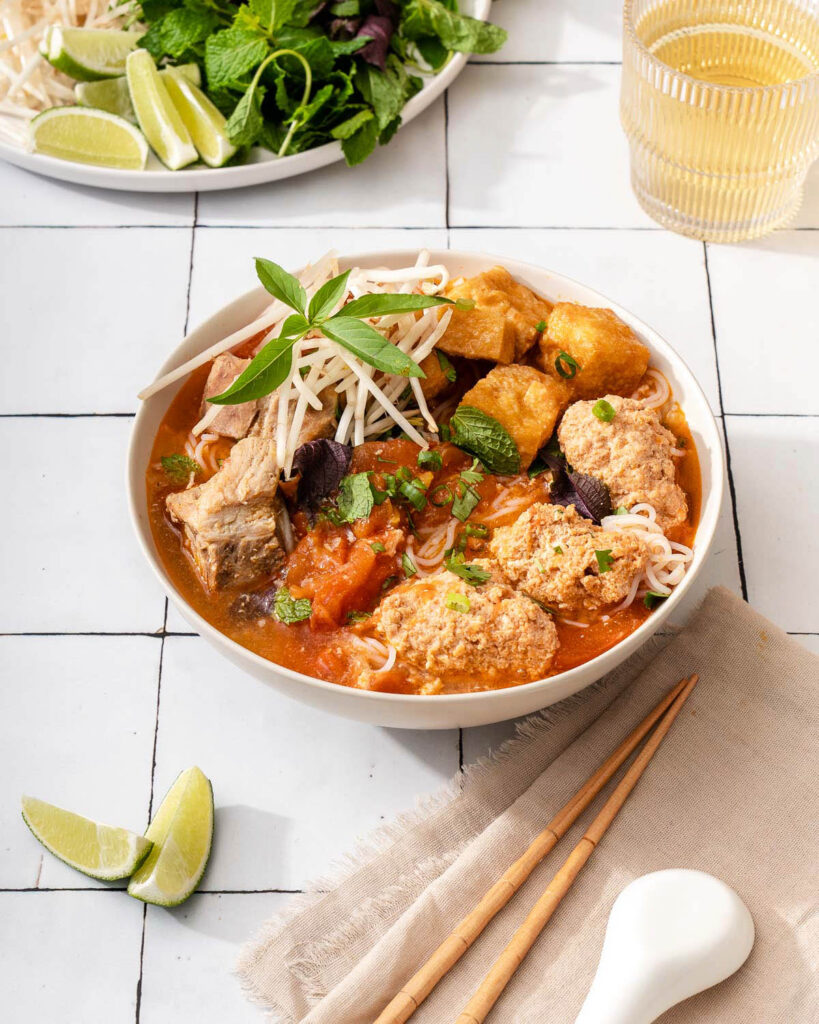
12. Bun Rieu
Bun rieu is a tasty Vietnamese noodle soup. It has a tomato-based broth that’s full of flavor. The soup contains rice noodles and crab meatballs.
You’ll find pork and shrimp in the meatballs too. Tofu is often added to the soup for extra texture. The broth gets its rich taste from fish sauce and shrimp paste.
You can top your bun rieu with fresh herbs and veggies. Some people like to add blood cake for a more authentic version. This soup is perfect when you want something comforting and filling.
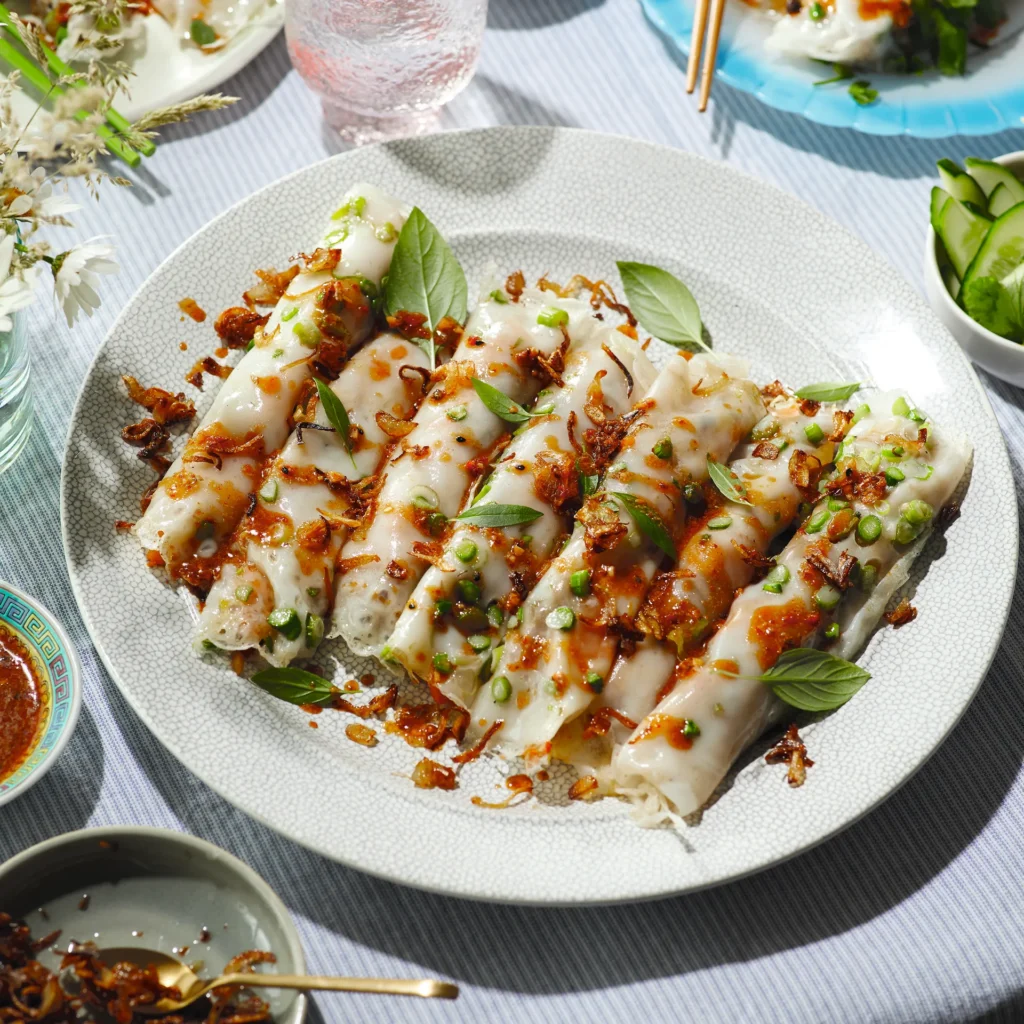
13. Banh Cuon
Banh cuon is a delicious Vietnamese dish of steamed rice rolls. You’ll love these soft, thin sheets of rice batter filled with savory ground pork and mushrooms.
To make banh cuon, you first prepare a batter with rice flour, tapioca flour, and water. Let it sit for several hours to develop the right texture.
For the filling, cook ground pork with onions, garlic, and wood ear mushrooms. Season it with salt and pepper to taste.
To assemble, spread a thin layer of batter on a steaming tray. Cook for a few minutes, then add filling and roll it up. Serve your banh cuon with fresh herbs and a dipping sauce for a tasty meal.
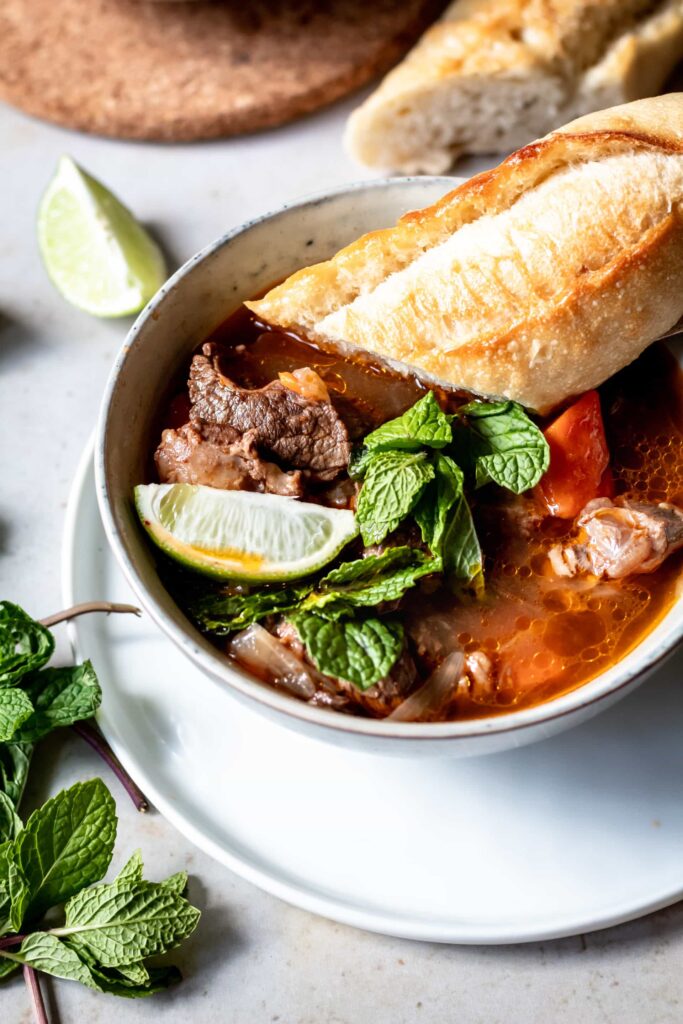
14. Bo Kho
Bo Kho is a rich Vietnamese beef stew. You’ll love its warm, comforting flavors.
To make Bo Kho, start by marinating beef chunks in spices. Use a mix of curry powder, lemongrass, and garlic for authentic taste.
Brown the beef in a pot, then add broth and tomato paste. Let it simmer until the meat is tender.
Add carrots and potatoes near the end of cooking. They’ll soak up the savory sauce.
Serve your Bo Kho with crusty bread or rice noodles. It’s perfect for chilly days or when you want a hearty meal.
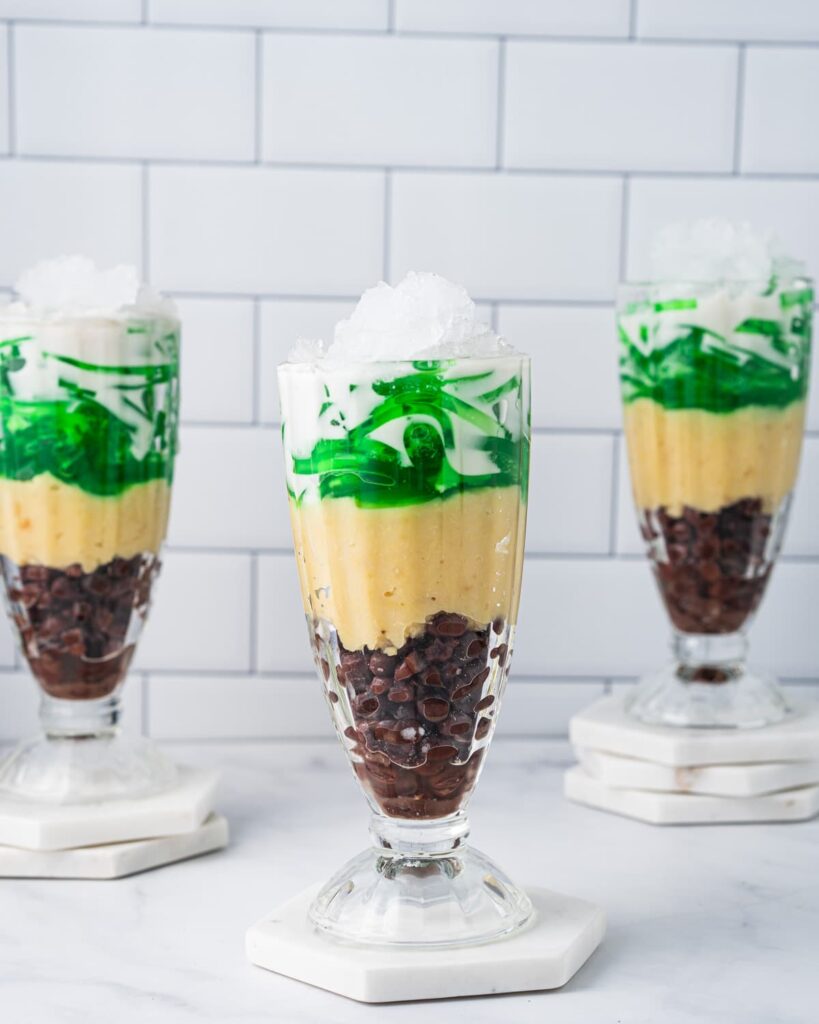
15. Che Ba Mau
Che Ba Mau is a refreshing Vietnamese dessert perfect for hot days. Its name means “three color dessert” in English.
You’ll find layers of red beans, yellow mung beans, and green pandan jelly in a glass. These layers create a colorful treat that’s both visually appealing and tasty.
To serve, add crushed ice and pour coconut milk over the top. The mix of textures and flavors makes each spoonful exciting.
This dessert is easy to make at home. You can use canned beans to save time. The pandan jelly might take a bit longer, but it’s worth the effort.
Try Che Ba Mau for a cool, sweet ending to your Vietnamese meal. It’s a great way to experience traditional flavors in a fun dessert.
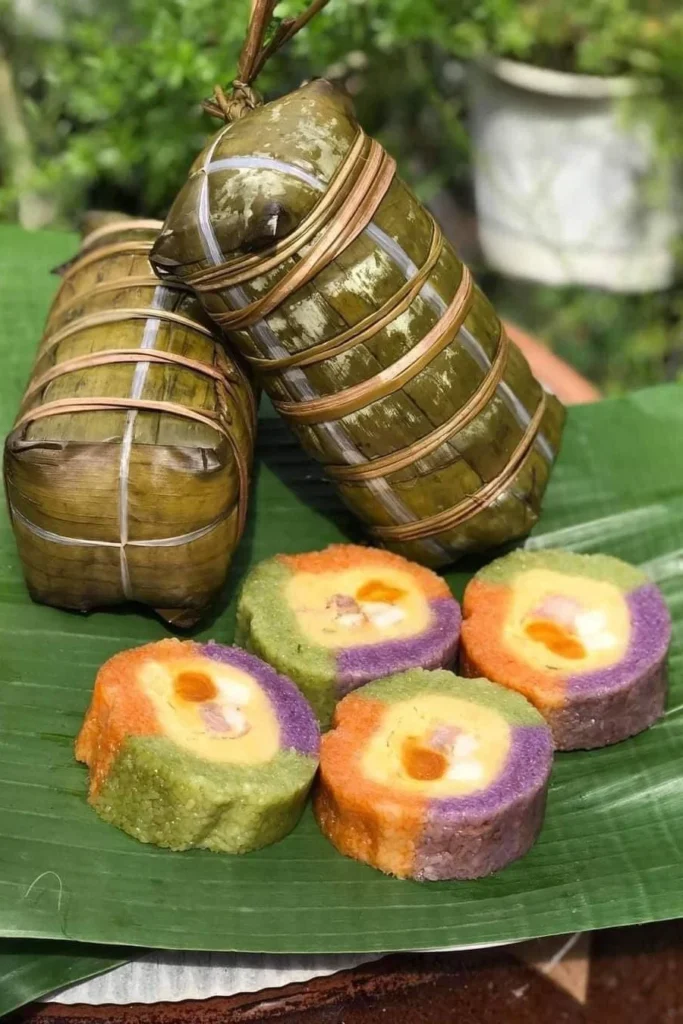
16. Banh Tet
Banh Tet is a traditional Vietnamese rice cake often enjoyed during Lunar New Year celebrations. You’ll find it’s made with glutinous rice, mung beans, and pork belly, all wrapped in banana leaves.
To make Banh Tet, you’ll need to soak the rice and mung beans overnight. Then, you’ll wrap the ingredients in banana leaves to form a cylindrical shape.
The cooking process involves boiling the wrapped cakes for 6-8 hours. This long cooking time ensures the rice is fully cooked and the flavors meld together.
Once cooked, you can slice and pan-fry the Banh Tet for a crispy exterior. This creates a delicious contrast with the soft, sticky interior.
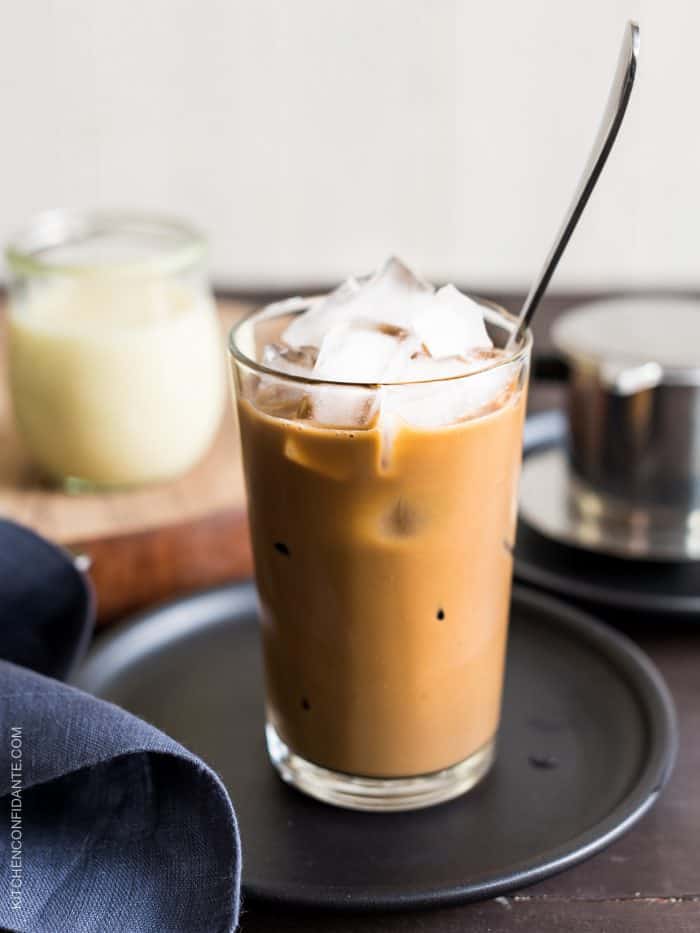
17. Ca Phe Sua Da
Ca Phe Sua Da is a popular Vietnamese iced coffee drink. It’s made with strong brewed coffee and sweetened condensed milk over ice.
To make it, you’ll need a Vietnamese coffee filter called a phin. Add ground coffee to the phin and place it over a glass with sweetened condensed milk.
Pour hot water into the phin and let the coffee drip slowly. This process takes about 5 minutes. The slow drip creates a rich, intense coffee flavor.
Once the coffee has finished dripping, stir it with the condensed milk. Add ice and enjoy your refreshing Ca Phe Sua Da.
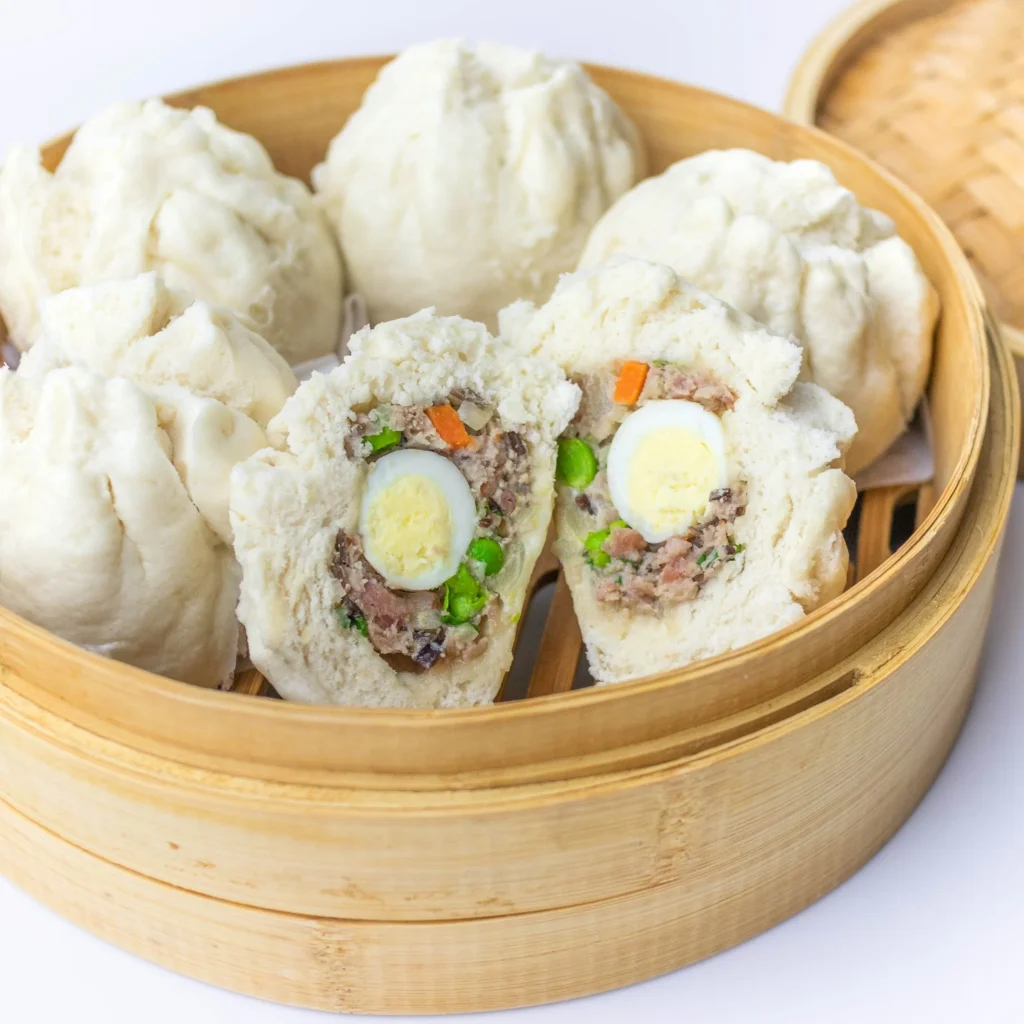
18. Banh Bao
Banh Bao is a delicious Vietnamese steamed pork bun. You’ll love these fluffy white buns filled with savory ground pork, mushrooms, and hard-boiled eggs.
To make Banh Bao, mix ground pork with oyster sauce, salt, sugar, and pepper. Add chopped onions and mushrooms for extra flavor. Shape the mixture into small balls.
Wrap the pork filling in a soft dough made from flour, water, and yeast. Place a piece of hard-boiled egg inside each bun before sealing.
Steam the buns for about 15 minutes until they puff up.
Serve Banh Bao hot as a satisfying snack or light meal. You can find these tasty buns at many Vietnamese bakeries and street food stalls.
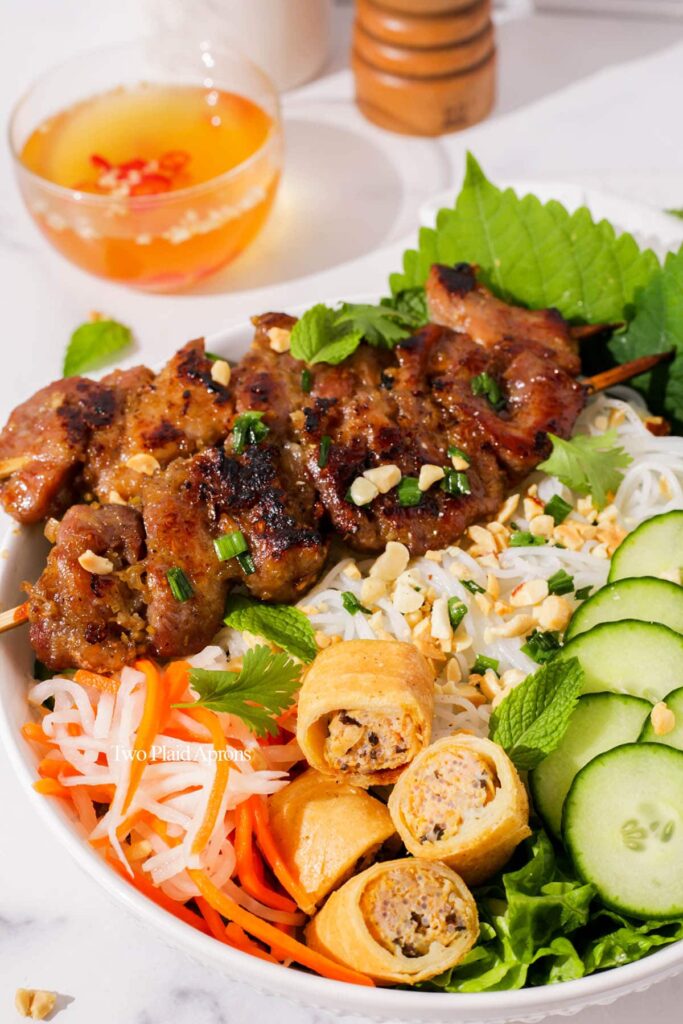
19. Bun Thit Nuong
Bun thit nuong is a tasty Vietnamese dish you’ll love. It combines grilled pork with rice noodles and fresh vegetables.
The pork is marinated in a mix of flavors like lemongrass, garlic, and fish sauce. Then it’s grilled until smoky and delicious.
You’ll find the noodles, pork, and veggies served in a bowl. A tangy dipping sauce called nuoc cham often comes with it.
This dish is light and refreshing, perfect for warm days. It’s popular street food in Vietnam and easy to make at home too.
Try bun thit nuong for a mix of textures and flavors in one satisfying meal.
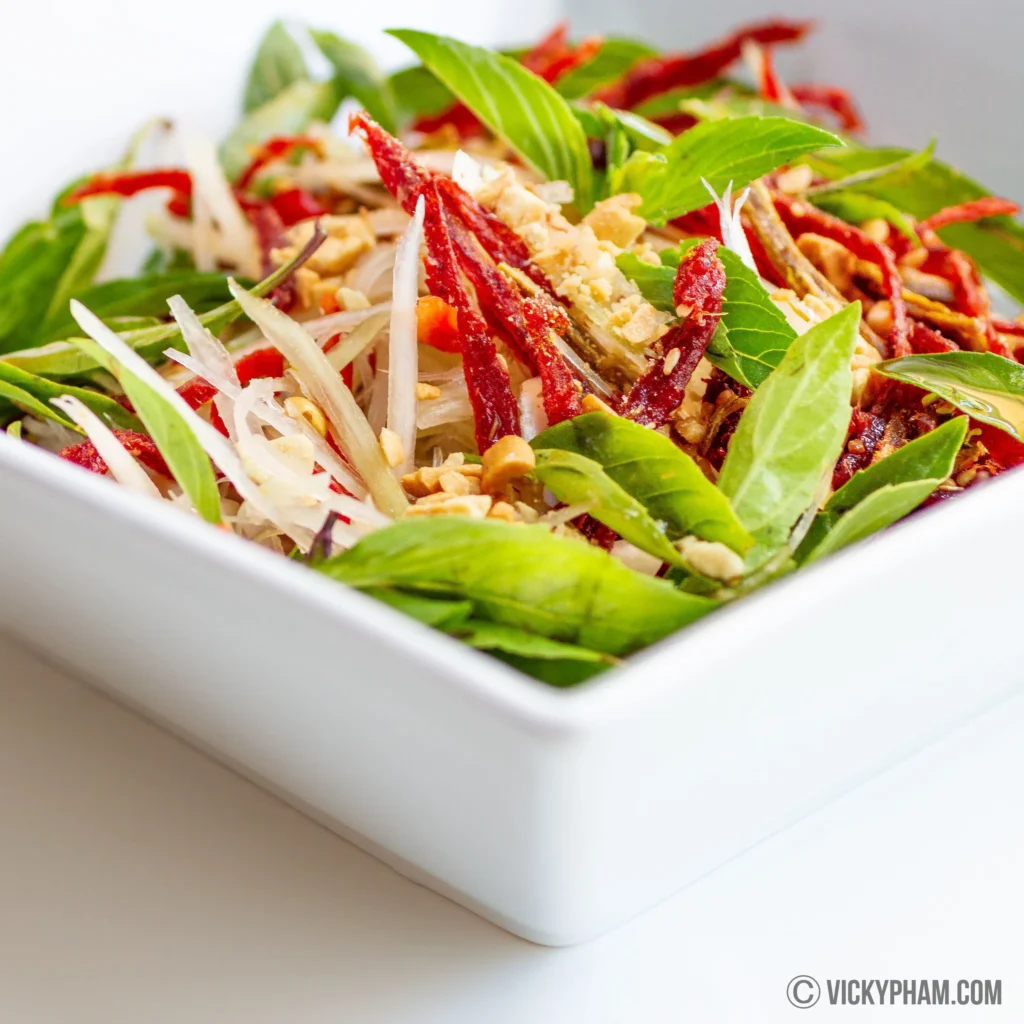
20. Goi Du Du
Goi Du Du is a refreshing Vietnamese green papaya salad. You’ll love its crisp texture and vibrant flavors.
This dish combines shredded unripe papaya with herbs like Thai basil and cilantro. The salad often includes beef jerky for extra protein and flavor.
A tangy dressing made with fish sauce, lime juice, and sugar ties everything together.
You can customize Goi Du Du to your taste. Try adding prawns or pork for variety.
Making Goi Du Du is easy. Just shred the papaya, mix in the herbs and meat, and toss with the dressing. It’s a quick and healthy option for warm days.
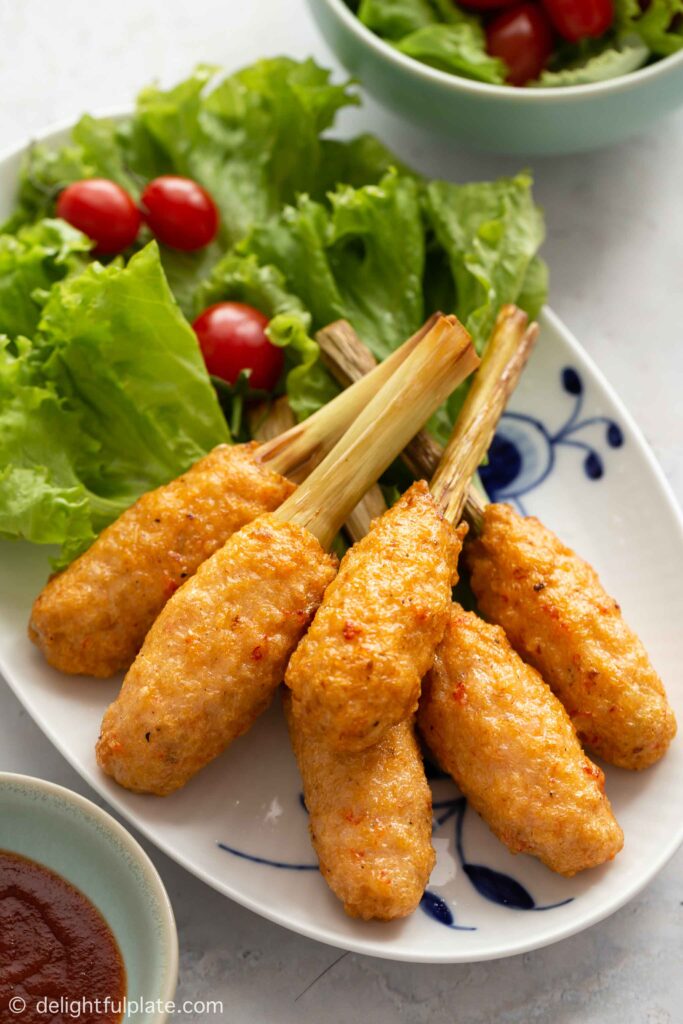
21. Chao Tom
Chao Tom is a tasty Vietnamese dish made with shrimp paste wrapped around sugarcane sticks. You can make it by blending shrimp with spices like garlic, scallions, and fish sauce.
Shape the mixture around sugarcane sticks, leaving some exposed at the bottom. Grill or fry the shrimp-covered sticks until they turn golden brown.
Serve Chao Tom as an appetizer or main course. You can eat the shrimp directly off the sugarcane, which adds a subtle sweetness. It’s often paired with rice noodles, herbs, and dipping sauce.
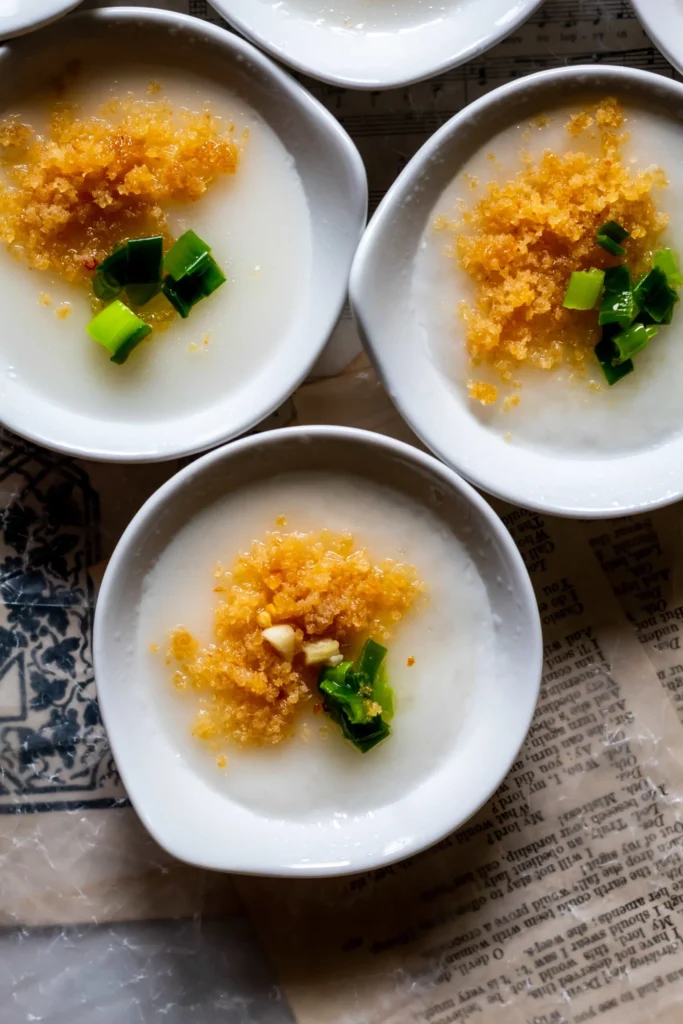
22. Banh Beo
Banh Beo is a popular Vietnamese steamed rice cake. These small, circular cakes are made from a batter of rice flour, tapioca starch, and water. They’re cooked in small dishes, creating a dimple in the center perfect for toppings.
You’ll often find Banh Beo topped with dried shrimp, crispy pork fat, and mung bean paste. A drizzle of scallion oil and fish sauce adds extra flavor. The combination creates a delightful mix of textures and tastes.
To eat Banh Beo, you can use a small spoon to scoop it out of its dish. The cakes are usually served at room temperature. They make a great appetizer or light meal, especially on hot days.
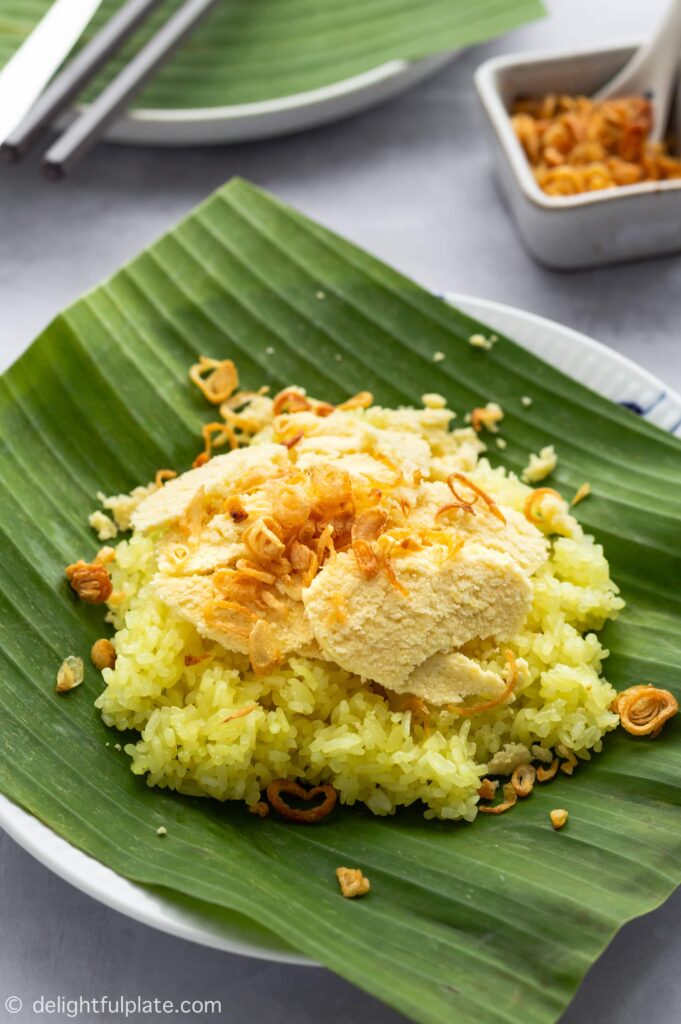
23. Xoi Xeo
Xoi Xeo is a popular Vietnamese sticky rice dish. You’ll love its vibrant yellow color and nutty flavor.
To make Xoi Xeo, soak sticky rice and mung beans separately. Steam the mung beans until soft, then grind them.
Mix the uncooked rice with ground mung beans and steam together. This creates a unique texture where the rice is coated in mung bean paste.
For extra richness, you can add coconut milk and sugar to the mixture. The result is a sweet and savory dish that’s perfect for breakfast or as a snack.
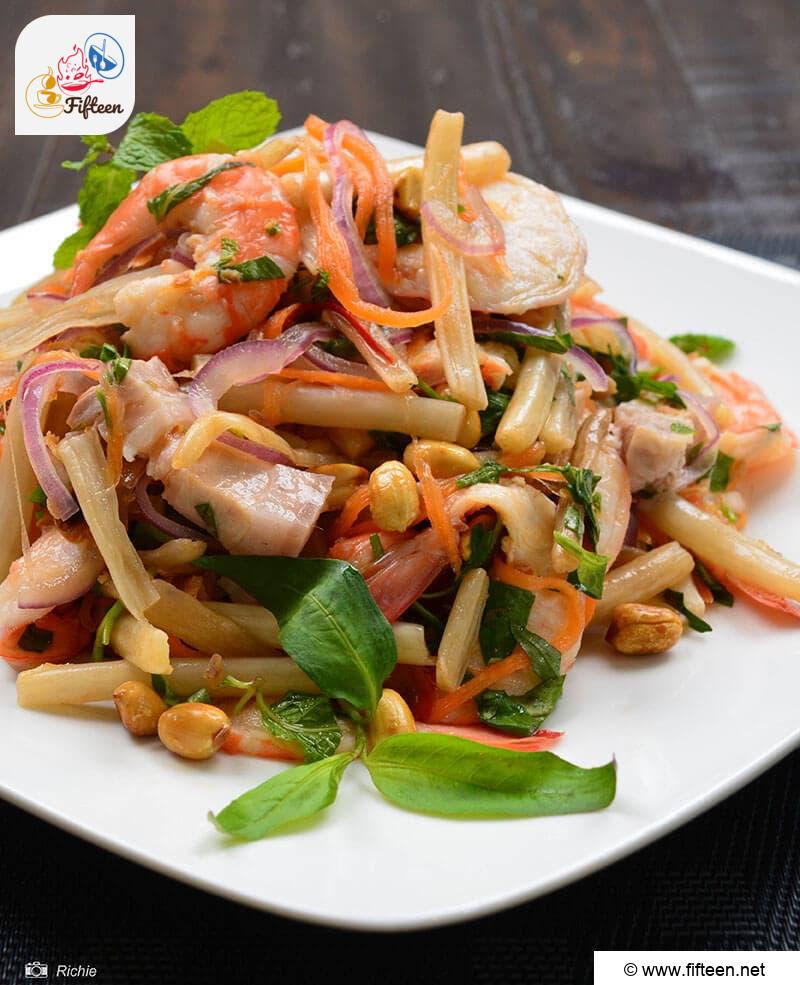
24. Goi Ngo Sen
Goi Ngo Sen is a refreshing Vietnamese lotus root salad. This dish combines crunchy lotus stems with tender shrimp and pork.
To make it, you’ll pickle thinly sliced lotus roots in a mixture of vinegar, water, and sugar. Boil shrimp until pink and slice them in half.
The dressing is a blend of fish sauce, sugar, citrus juice, and garlic. You can add chili for extra kick.
Mix the pickled lotus roots, shrimp, and dressing just before serving. Some recipes include pork shoulder for added flavor.
This salad is light, crisp, and perfect for warm days. It balances sweet, sour, and savory tastes in each bite.
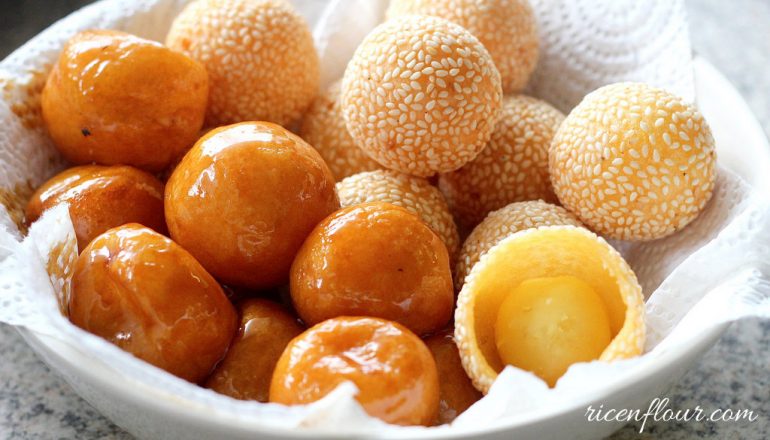
25. Banh Ran
Banh Ran are sweet Vietnamese fried sesame balls. They have a crispy outer shell coated in sesame seeds and a chewy interior. Inside, you’ll find a sweet mung bean paste filling.
To make Banh Ran, you start with a dough made from glutinous rice flour, regular rice flour, and water. You form the dough into balls and stuff them with mung bean paste. Then you roll them in sesame seeds.
The balls are deep-fried until golden brown and crispy. When you bite into one, you’ll enjoy the contrast between the crunchy exterior and soft, sweet center. Banh Ran are often eaten as a snack or dessert in Vietnam.
Essential Ingredients for Vietnamese Cooking
Vietnamese cuisine relies on a few key ingredients to create its distinctive flavors. These staples form the foundation of many classic dishes and can elevate your home cooking.
Fish Sauce
Fish sauce is a crucial element in Vietnamese cooking. It adds a salty, umami flavor to dishes. Look for bottles labeled “nuoc mam” when shopping.
You’ll use fish sauce in marinades, dipping sauces, and soups. A little goes a long way, so start with small amounts. Premium fish sauce has a clearer color and milder smell.
Mix fish sauce with lime juice, sugar, and chili for a basic dipping sauce. This combo works great with spring rolls or grilled meats.
Fresh Herbs
Fresh herbs play a big role in Vietnamese food. They add bright flavors and aromas to many dishes.
Common herbs include:
- Cilantro
- Thai basil
- Mint
- Lemongrass
You’ll often find a plate of fresh herbs served alongside soups and noodle dishes. Add them as you eat to customize the flavors.
Lemongrass has a citrusy scent. You can use the white bottom part in stir-fries and soups. Remove it before serving or finely chop it to eat.
Rice Paper
Rice paper is used to make fresh spring rolls. These thin, translucent sheets become pliable when soaked in water.
To use rice paper:
- Dip in warm water for a few seconds
- Lay on a damp cloth
- Add fillings like shrimp, herbs, and noodles
- Roll tightly
You can find rice paper in Asian grocery stores or online. Store it in a dry place. Once opened, keep it in an airtight container to prevent moisture.
Rice paper rolls make great appetizers or light meals. Serve them with peanut sauce or fish sauce for dipping.
Traditional Cooking Techniques
Vietnamese cuisine uses simple yet effective cooking methods. These techniques bring out the best flavors in fresh ingredients while keeping dishes healthy and light.
Blanching
Blanching is a quick cooking method used in many Vietnamese recipes. You dip vegetables or meats in boiling water for a short time. Then you quickly cool them in ice water. This keeps food crisp and bright.
Blanching works great for leafy greens like morning glory. It also helps remove strong flavors from meats. You can blanch bean sprouts to make them more tender for pho. The process locks in nutrients and color.
Stir-Frying
Stir-frying is fast and easy. You cook small pieces of food in a very hot wok or pan.
The high heat seals in flavors and keeps veggies crisp.
Vietnamese stir-fries often use garlic, shallots, and green onions. Popular dishes include beef and green peppers or shrimp with snow peas.
You can stir-fry noodles too, like in dishes such as mi xao don.
The key is to keep the food moving. This creates an even cook without burning.
Stir-frying uses less oil than deep-frying, making it a healthier choice.
